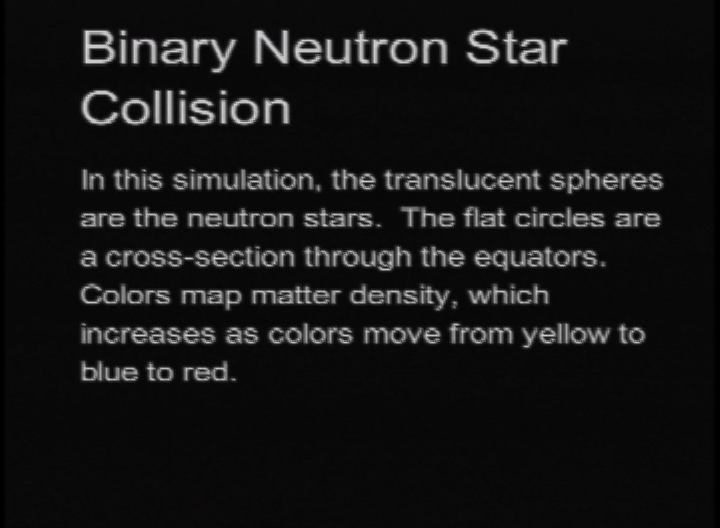Universe
ID: 560
Systems of orbiting neutron stars are born when the cores of two old stars collapse in supernova explosions. Neutron stars have the mass of our Sun but are the size of a city, so dense that boundaries between atoms disappear. Einstein's theory of general relativity predicts that the orbit shrinks from ripples of space-time called gravitational waves. After about 1 billion simulation years, the two neutron stars closely circle each other at 60,000 revolutions per minute. The stars finally merge in a few milliseconds, sending out a burst of gravitational waves.

Neutron Star Collision

Visualization Credits
Dave Bock (NASA): Lead Animator
John Shalf (NASA): Animator
Doug Swesty (University of Illinois at Urbana-Champaign): Scientist
Alan Calder (University of Illinois at Urbana-Champaign): Scientist
Ed Wang (State University of New York at Stony Brook): Scientist
John Shalf (NASA): Animator
Doug Swesty (University of Illinois at Urbana-Champaign): Scientist
Alan Calder (University of Illinois at Urbana-Champaign): Scientist
Ed Wang (State University of New York at Stony Brook): Scientist
Please give credit for this item to:
National Center for Supercomputing Applications, University of Illinois at Urbana-Champaign
National Center for Supercomputing Applications, University of Illinois at Urbana-Champaign
Short URL to share this page:
https://svs.gsfc.nasa.gov/560
This item is part of this series:
Images of Earth and Space
Keywords:
SVS >> Neutron Star
DLESE >> Space science
NASA Science >> Universe
https://svs.gsfc.nasa.gov/560
This item is part of this series:
Images of Earth and Space
Keywords:
SVS >> Neutron Star
DLESE >> Space science
NASA Science >> Universe











